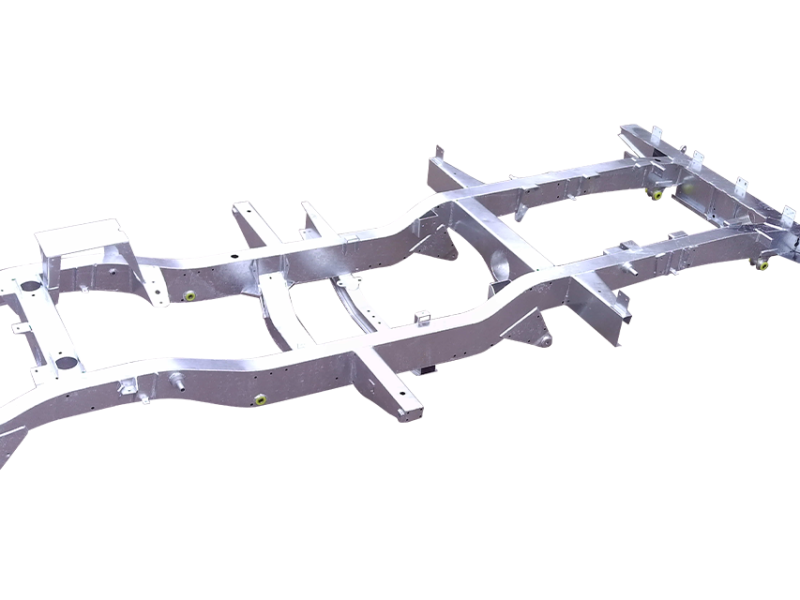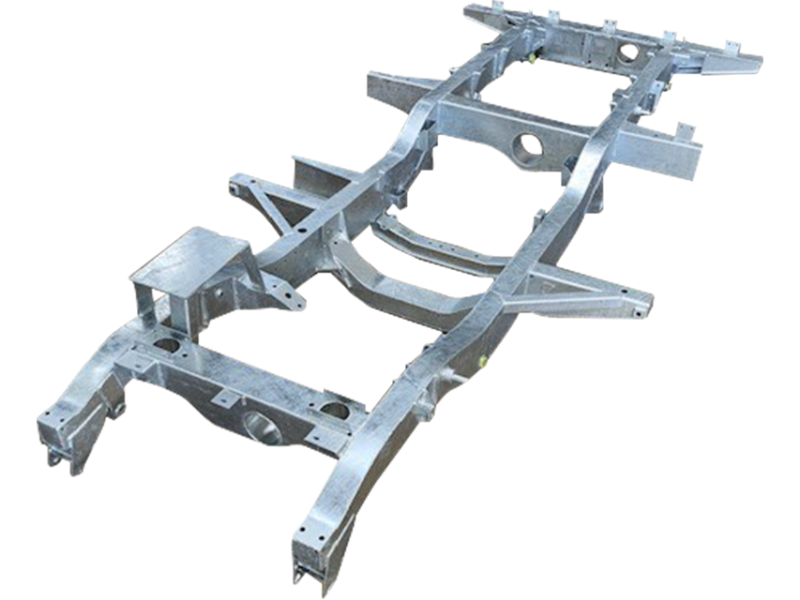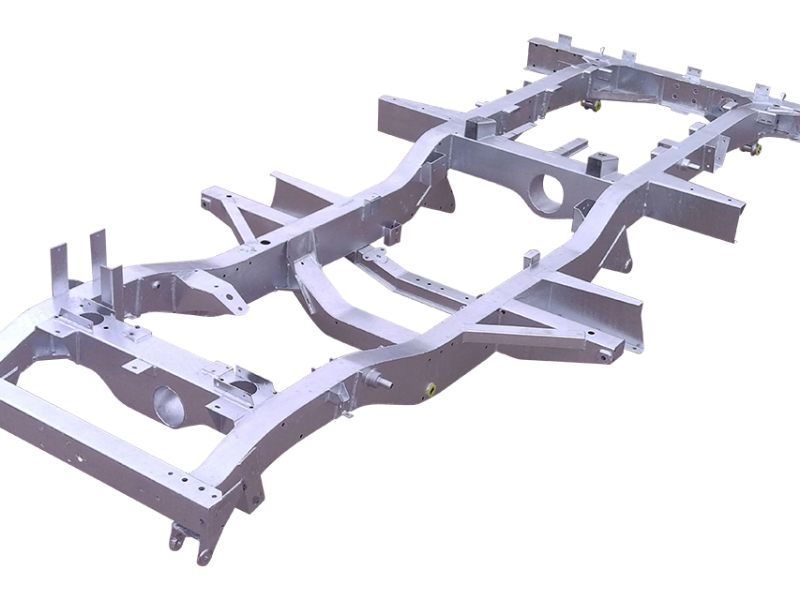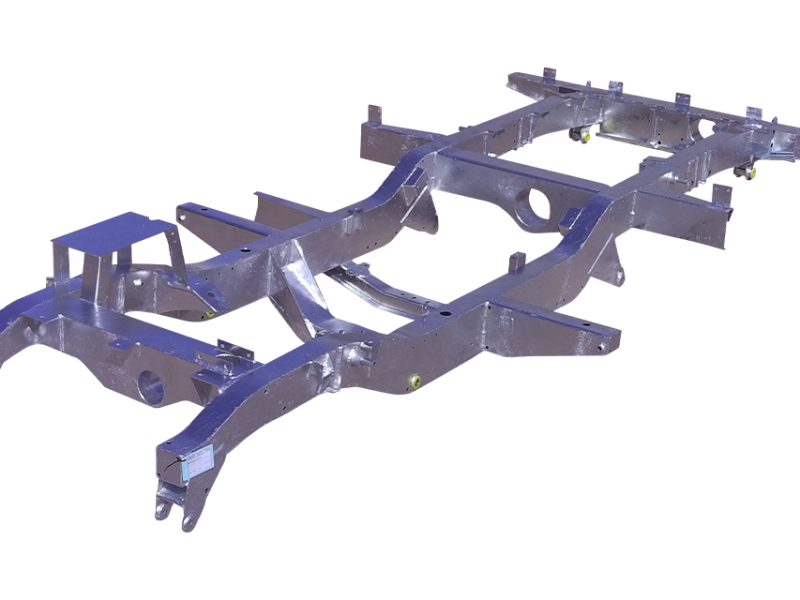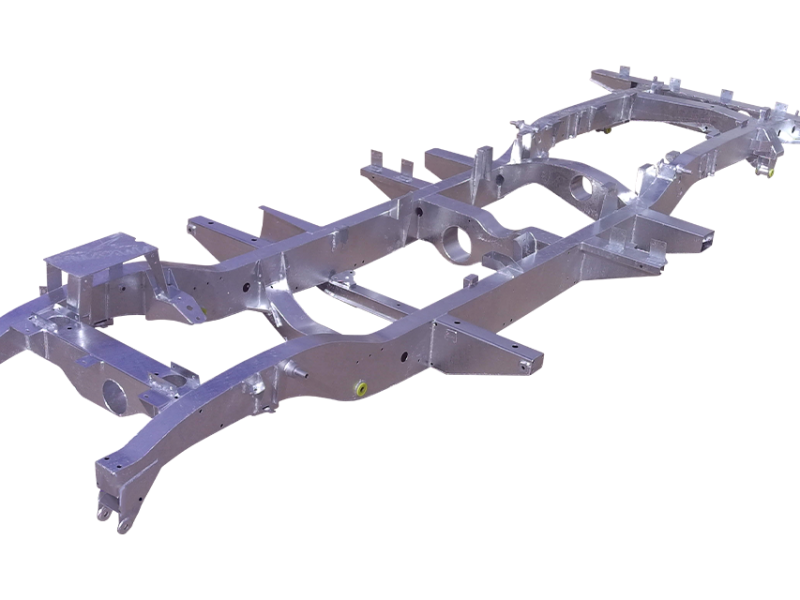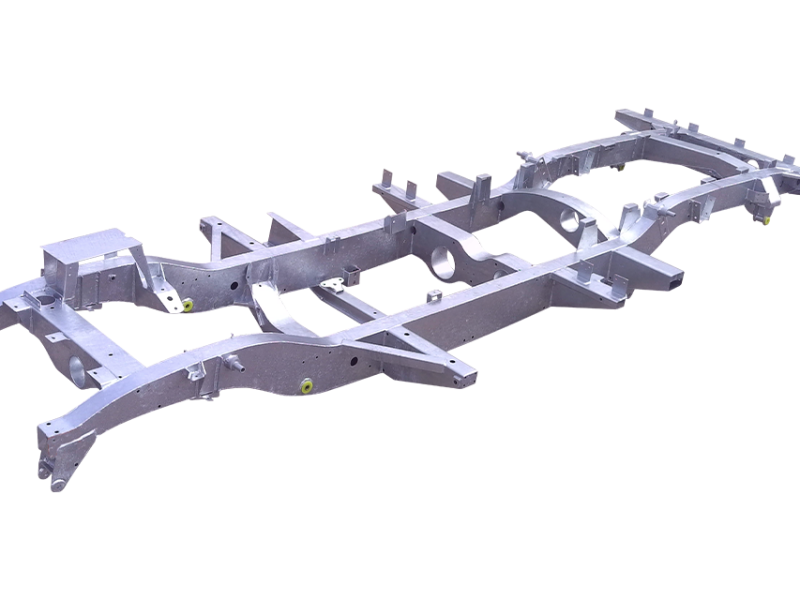The successor to the successful series I was the series II, which saw a production run from 1958 to 1961. It came in 88 inch (2.24 m) and 109 inch (2.77 m) wheelbases. This engine became the standard Land Rover unit until the mid-1980s when diesel engines became more popular.
There was some degree of overlap between series I and II production. Early series-II 88-inch (2.24 m) vehicles were fitted with the old 2-litre petrol engine to use up existing stock from production of the series I. The 107-inch (2.72 m) Station Wagon continued until late 1959 due to continued demand from export markets and to allow the production of series-II components to reach full level.
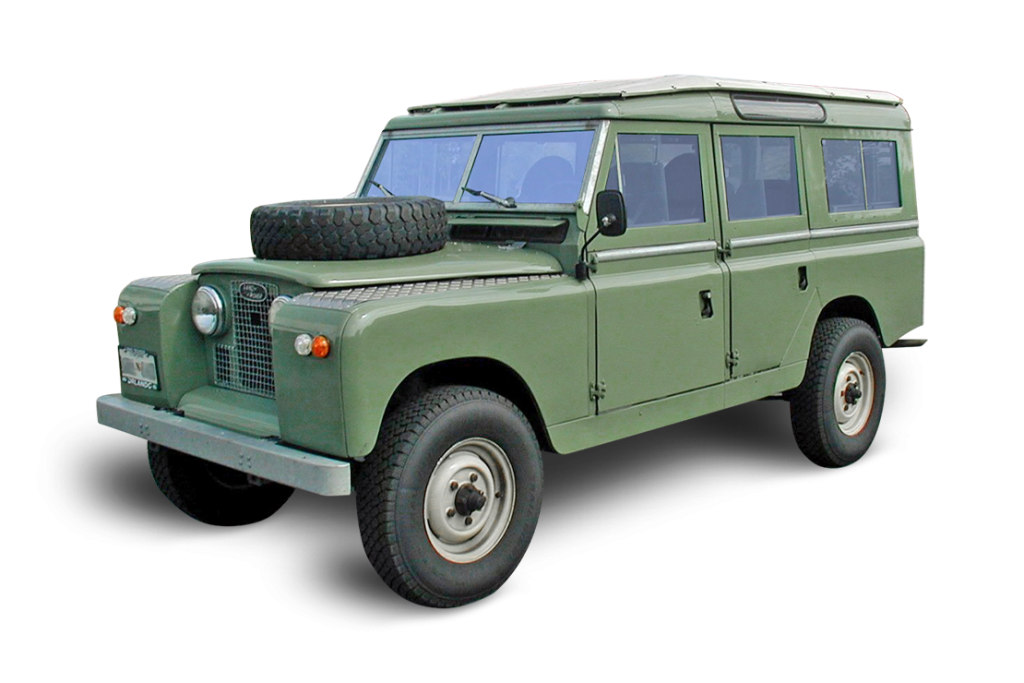
Series 2 chassis
-
Series 2 & 2a A-C 88 inch Richards chassis
€2.738,23 – €3.233,23Opties selecteren Dit product heeft meerdere variaties. Deze optie kan gekozen worden op de productpagina -
Series 2a D-H 88 inch Richards chassis
€2.738,23 – €3.233,23Opties selecteren Dit product heeft meerdere variaties. Deze optie kan gekozen worden op de productpagina -
Series 2a D-H 88 inch light weight Richards chassis
€2.913,68 – €3.298,68Opties selecteren Dit product heeft meerdere variaties. Deze optie kan gekozen worden op de productpagina -
Series 2 88 inch replica Richards chassis
€2.948,77Opties selecteren Dit product heeft meerdere variaties. Deze optie kan gekozen worden op de productpagina -
Series 2 & 2a A-C 4 cylinder 109 inch Richards chassis
€3.524,73 – €4.018,93Opties selecteren Dit product heeft meerdere variaties. Deze optie kan gekozen worden op de productpagina -
Series 2a D-H 4 cylinder 109 inch Richards chassis
€3.524,73 – €4.055,93Opties selecteren Dit product heeft meerdere variaties. Deze optie kan gekozen worden op de productpagina
Land Rover Series 1, 2 and 3
The Land Rover Series 1, 2 and 3, commonly referred to as Series, are compact British offroad vehicles, produced by the Rover Company since 1948. Later this became British Leyland. The Land Rover distinguished itself because it was inspired by the World War 2 Jeep.
From launch, it was the first mass-produced civilian four-wheel drive car with doors on it, and an available hard roof. Contrary to conventional car and truck chassis, it used a sturdier fully box-welded frame. Furthermore, due to post-war steel shortage, and aluminium surplus, Land Rovers received non-rusting aluminium alloy bodies, favouring their longevity. In 1992, Land Rover claimed that 70% of all the vehicles they had built were still in use.
Most series models feature leaf-spring suspension with selectable two or four-wheel drive (4WD), however series I’s produced between 1948 and mid-1951 had constant 4WD via a freewheel mechanism, and the Stage 1 V8 version of the series III featured permanent 4WD. All three models could be started with a front hand crank and had the option of front & rear power takeoffs for accessories.
After adding a long wheelbase model in 1954, Land Rover also offered the world’s first four / five door, 4WD off-road station wagon in 1956. Series Land Rovers and Defenders continually excelled in space utilization, offering (optional) three abreast seating in the seating rows with doors, and troop seating in the rear, resulting in up to seven seats in the SWB, and up to ten seats in the LWB models, exceeding the capacity of most minivans, when comparing vehicles of the same length.

